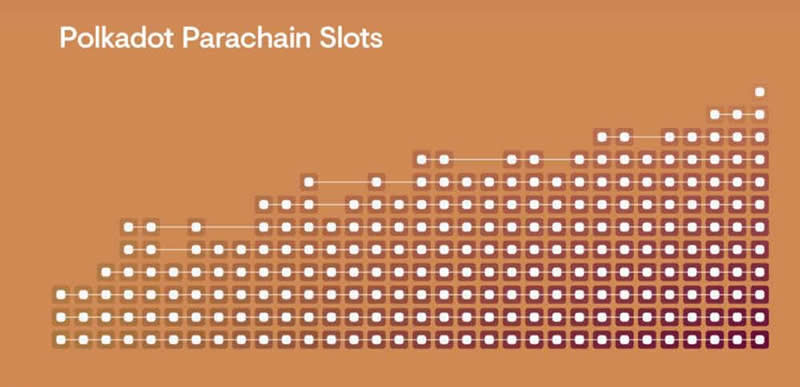If you want to realize the dynamic allocation and access of parallel chains in a multi-chain architecture, you must conduct a Polkadot card slot auction. The purpose is to optimize the process of parallel link access so that the entire network can be more effective. way to operate. What exactly does Polkadot slot auction mean? Simply put, the Polkadot slot auction refers to a mechanism in the Polkadot network that is used to allocate slots in the network. Polkadot is a multi-chain oriented blockchain platform with a multi-chain architecture that supports interactions between different parallel chains and shared relay chains. The editor below will tell you in detail.

The Polkadot slot auction is an improved bidding method adopted by Polkadot, based on the principle of candle auction. People participating in the auction need to pledge DOT to bid for the card slot of the parallel chain. If the bidding is successful, they can rent the card slot and become Polkadot's parachain to realize cross-chain functions. The rental period for each card slot is 3 months, with a maximum rental period of 96 weeks. This approach provides greater flexibility and scalability to Polkadot’s ecosystem.
On the Binance platform, users can use their DOTs to vote for the corresponding "crowd loan project" and receive corresponding pre-heating rewards. In addition, if the project the user participates in successfully bids, they will receive the corresponding voting income, and the corresponding DOT will be locked on the chain until the end of the lease.
The Polkadot slot auction rules include three parts: rental deposit, rental period and rental win. The following is a detailed analysis.
1. Rental deposit rules
Regardless of the 20% officially reserved or the 80% of slots participating in the auction, you need to lock the dot to obtain it. After the lease period ends, all locked DOT will be returned.
It should be noted that the DOT that has participated in pledge mining cannot be used for auction locking at the same time. However, the current IPO allows project parties to attract communities and investors through incentives to lock DOT to the project party to participate in the auction.
2. Lease period rules
Each project can bid for a single or multiple adjacent lease periods within a slot period, and each bid has only one bid opportunity. For example, if the lease period of a slot is 1-2-3-4, and each lease period is 6 months, then the lease period of the project party must be continuous without gaps, such as 1-2, 2- 3-4, not 1-2-4. Unless the project party fails to bid in lease periods 1-2, it can participate in the bidding in lease period 4.
At the same time, as time goes by, the project party can extend its lease beyond the 2-year slot period by leasing a continuous slot. For example: if the project party rents slot 1-2-3-4, it can rent slot 1-2-3-4 in succession, so it is 1-2-3-4 plus 1-2-3-4. 4 years.
3. Lease winning rules
The calculation rule of Polkadot is that the bidding plan with the largest average number of DOTs in the four lease periods of a slot (2 years) wins. This means that the highest bidder may not always win during any given slot rental period.
Example: Suppose there are three project parties bidding. Project Party A (lease period 1 to 4, 75DOT for each lease period), Project Party B (lease period 3 to 4, 90DOT for each lease period), Project Party C (lease period 1 to 2, 30DOT for each lease period) .
In this example, project party A wins because project party A (1~4) has an average of 75DOT per lease period, which is greater than project party B (3~4) and C (1~2) The combined average is 60DOT per lease period.
The above is the detailed content of What are the meaning and rules of analyzing the Polkadot slot auction?. For more information, please follow other related articles on the PHP Chinese website!




